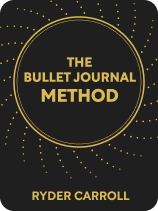

This article is an excerpt from the Shortform book guide to "The Bullet Journal Method" by Ryder Carroll. Shortform has the world's best summaries and analyses of books you should be reading.
Like this article? Sign up for a free trial here .
Do you struggle to overcome challenges in life? How can bullet journaling help you face your problems and overcome them?
Bullet journaling might sound like a silly solution to such a fundamental problem. But Ryder Carroll, the author of The Bullet Journal Method, suggests using a bullet journal to break down your problems to discover their root causes so you can face them head-on.
Here’s how keeping a bullet journal can help you deconstruct your problems.
Deconstruct Challenges
One fundamental component of productivity is learning how to face problems. In life, Carroll argues, the key to overcoming obstacles is breaking them down into smaller, more manageable components that empower us to take action.
However, Carroll says that despite having the power to make choices that can alter our circumstances, we tend to see them as entirely outside of our control and therefore feel powerless. For example, being obligated to pay down student debt can make you feel powerless over your financial situation because having high interest rates outside of your control hinders your ability to save money.
(Shortform note: While Carroll’s argument that we always have the power to act is an attractive theory, it may not always be realistic or straightforward. Victims of systemic oppression, for example, don’t necessarily have access to the same level of resources and opportunities as the average person. Therefore, although everyone has the power to make choices, the impact of those choices may not be as significant for those who face high levels of inequality.)
The Bullet Journal Solution: “The Five Whys” Method
To take your power back and address your challenges head-on, Carroll recommends that you create a new customized section and use the “Five Whys” method. The founder of Toyota, Sakichi Toyoda, created the method to uncover problems and find solutions.
The method: Choose a problem and ask why it’s occurring five times. For example:
- I’m struggling to lose weight → Why?
- Because I don’t have time to exercise → Why?
- Because I’m really busy at work → Why?
- Because I’m working alone on a big project → Why?
- Because my boss thinks it’s a one-person job → Why?
- Because I’ve done similar work in the past, even though I got burnt out
(Shortform note: In addition to uncovering the root of a problem, you can use the Five Whys method to help you discover your underlying motivation. Instead of asking “why?” to solve a problem, you can instead ask “why do I want this?” to find the purpose of a goal.)
Carroll says that by asking these questions, you can see beyond the superficial to everything that’s involved in the problem. What’s more, once you’ve broken the problem down into parts, you can start to find solutions targeting each component. For instance, if you don’t have time to exercise, you could wake up earlier, meal prep on the weekends, bike to work, and so on.
(Shortform note: Although Carroll suggests the Five Whys for uncovering the root causes of a problem, he doesn’t mention the Five Hows, which is an accompanying technique used to develop a solution to that problem. Just as with the Five Whys, you can begin with an initial solution and ask yourself “how?” to brainstorm the details of that solution. For example, if your solution to having no time to exercise is to wake up earlier, by asking “how?” you can identify an action that will realize that solution, such as “go to bed earlier the night before.”)

———End of Preview———
Like what you just read? Read the rest of the world's best book summary and analysis of Ryder Carroll's "The Bullet Journal Method" at Shortform .
Here's what you'll find in our full The Bullet Journal Method summary :
- A comprehensive guide to using the Bullet Journal Method
- How to maintain a journaling practice that can improve your overall quality of life
- How to extend the method beyond productivity to a practice in mindfulness






